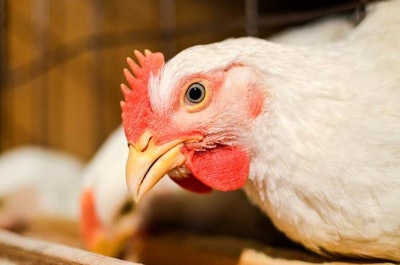
Sales of poultry have suffered in both value and volume in Erbil, the majority Kurdish governorate in northern Iraq, since Baghdad imposed a ban on the import of its poultry products to the central and south of the country earlier in 2016.
Salah Bakir, the head of the Kurdistan poultry farmers’ association, told Rudaw that the ban had cost the industry millions of dollars. The prices of poultry products have dropped by almost 40 percent since the ban, he said. Around 10 percent of producers have gone out of business and large numbers of employees have been laid off.
More than half of the region’s poultry products had previously been marketed in the central and southern provinces of Iraq.
There are more than 1,200 poultry farms in the Kurdistan region, producing nearly 120,000 metric tons (mt) of meat, according to the association.
Avian influenza issues
In January, Iraq announced it was banning imports of live birds and poultry products from more than 20 countries on fears of allowing the entry of avian influenza, according to Iraq Business News.
At the same time, Baghdad alleged the virus had been detected in products from the Kurdistan Region.
Bakir dismissed Baghdad’s claim. He told Rudaw the decision was politically motivated, the consequence of a recent deterioration in relations between Baghdad and Erbil. New markets for Kurdistan poultry are being sought in Syrian Kurdistan.
Iraqi chicken production steady
According to the statistics section of the United Nations’ Food and Agriculture Organization (FAOstat), Iraq produced 85,630 mt of chicken in 2013, the most recent year for which it has published figures. There had been no significant change in output over the previous 2 years, following recovery from a low of 33,000 mt in 2009.
Iraqi poultry production was forecast to remain flat in 2014, with production reaching only 160,000mt, according to the USDA Foreign Agricultural Service in a report in June 2013. The Service estimated output in 2012 and 2013 at 151,000 mt and 160,000 mt, respectively, and attributed slow development of the sector to high flock mortality rates and the costs associated with importing feed. Total poultry meat consumption was forecast to reach 770,000 mt in 2013, putting average annual per capita consumption at 24 kg.
Despite the country’s economic and security situation, there is a growing trend among Iraqis to eat meals away from home, reports Hurriyet Daily News. Local entrepreneurs are opening new eateries of all types across the country, according to the report, offering opportunities for poultry firms to supply more and a wider range of chicken and egg products.

















